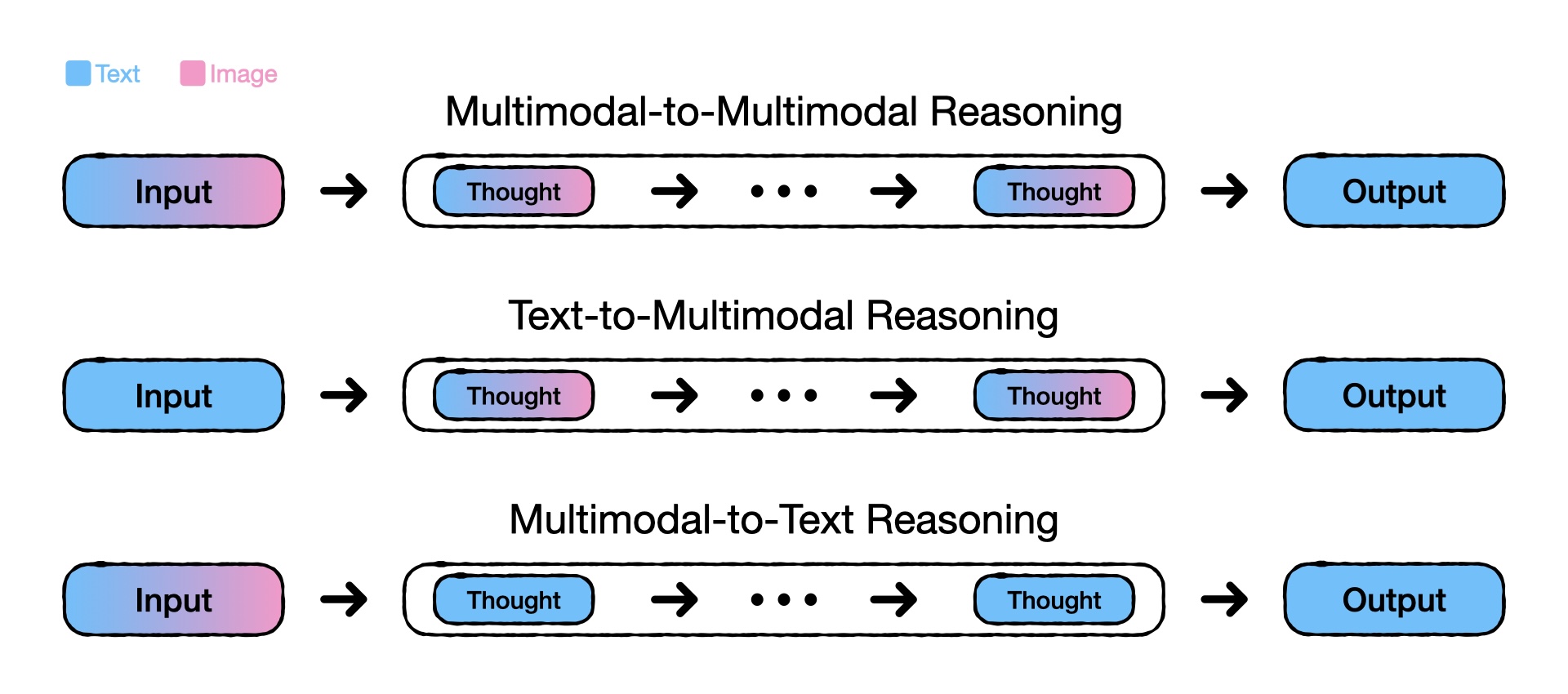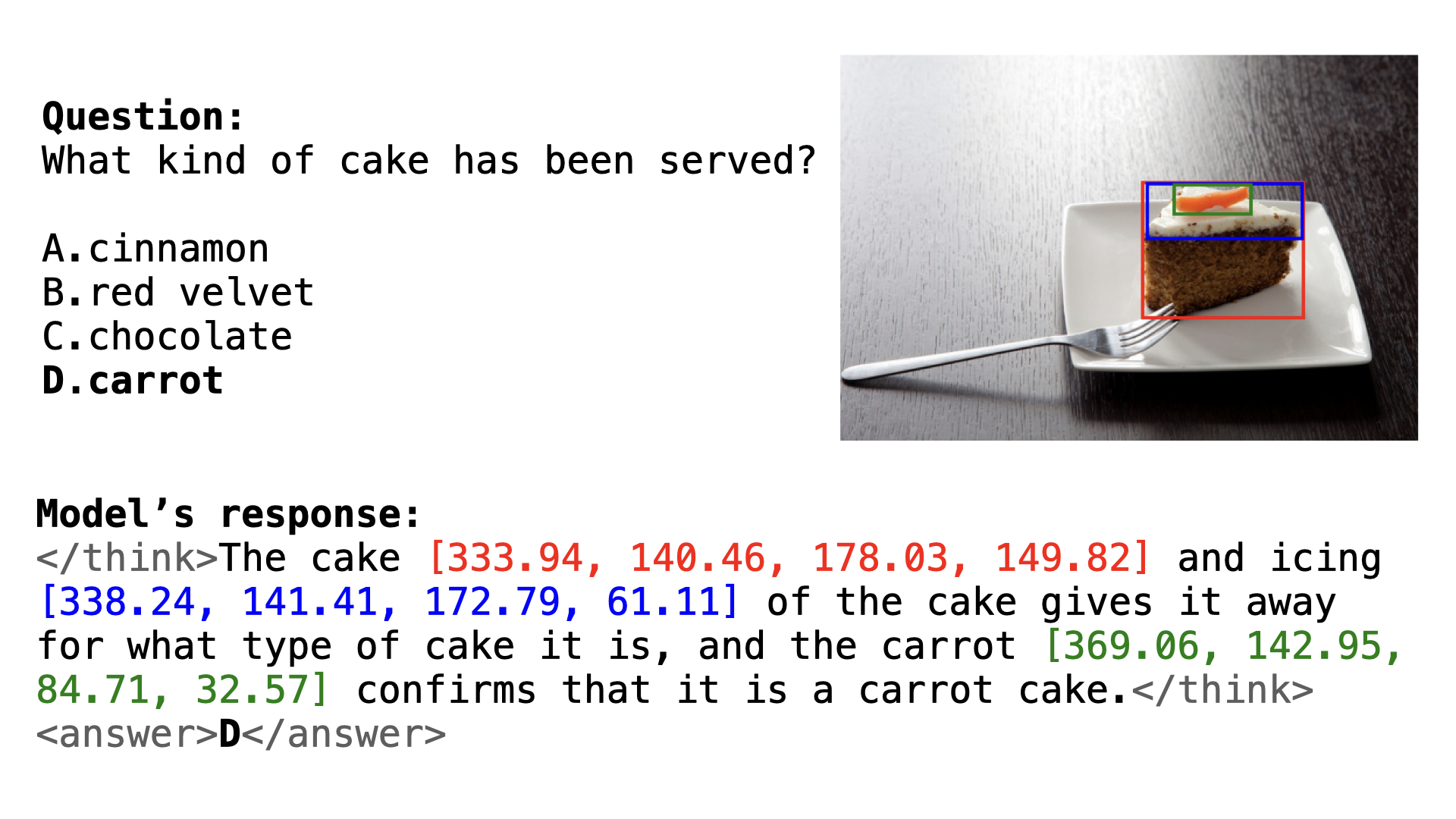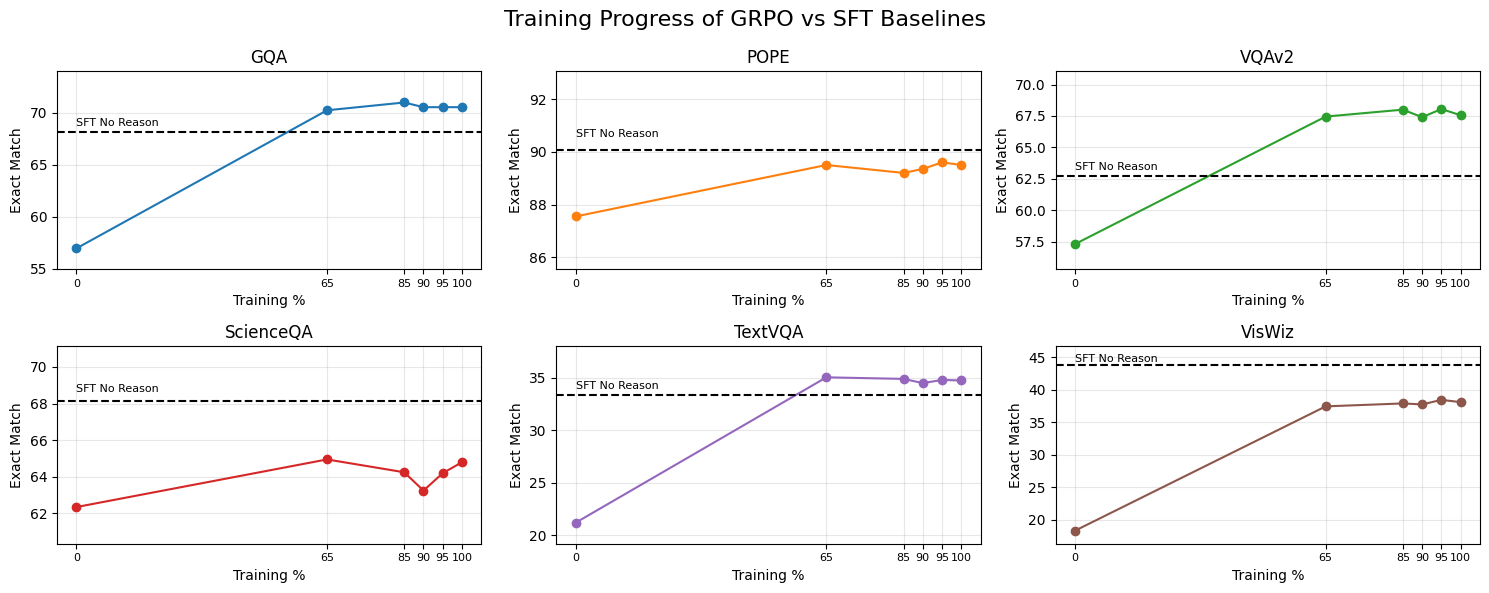Mixed-modal Reasoning
Trained 3 paradigms of visual reasoning using GRPO
Chain-of-thought reasoning has transformed how large language models approach complex problems by generating explicit intermediate steps. As vision-language models have matured, a fundamental question emerges: should reasoning chains remain purely textual, or can visual representations enhance the thinking process?
This project investigates three paradigms for multimodal chain-of-thought reasoning. Multimodal-to-Multimodal takes image and text as input and generates reasoning chains that interleave visual and textual thoughts. Text-to-Multimodal starts with text alone but produces multimodal reasoning chains including generated images. Multimodal-to-Text processes image and text inputs but constrains reasoning to textual chains enriched with visual grounding elements like bounding boxes.

A key challenge is the scarcity of datasets with ground-truth reasoning chains. To address this, I employed Group Relative Policy Optimization (GRPO$^{[1]}$), a reinforcement learning technique that learns reasoning strategies from input-output pairs alone, guided by paradigm-specific reward functions.
Methodology
Multimodal-to-Multimodal Reasoning
I used Anole7B, built on the Chameleon$^{[2]}$ architecture, which processes both image and text tokens through a unified transformer. The model was fine-tuned using LoRA$^{[3]}$ on PuzzleVQA, a dataset of synthetically generated puzzles involving abstract patterns with colors, numbers, sizes, and shapes. I trained both multimodal and textual-only versions to compare performance across 20 different puzzle types, with 5 used for training (in-domain) and 15 held out (out-of-domain).
Text-to-Multimodal Reasoning
For this paradigm, I trained SEED-LLaMA-8B using GRPO on the ReSQ dataset, containing about 1,000 questions involving spatial reasoning about described scenes. The model learned through four reward functions: formatting compliance, accuracy, image-text alignment (cosine similarity between descriptions and generated images), and a penalty for excessive image generation. I compared against a textual GRPO baseline and a strong baseline using DALL-E 3 for visualization and GPT-4o for reasoning.


Multimodal-to-Text Reasoning
This paradigm used a two-stage pipeline with Qwen2.5-VL-7B. First, supervised fine-tuning on reasoning chains with interleaved bounding boxes warmed up the model. Second, GRPO training optimized three rewards: accuracy, format compliance, and IoU scores measuring bounding box quality. I trained on DrivingVQA and A-OKVQA, totaling about 20,000 examples with ground-truth reasoning traces containing bounding boxes.
Results
When Images Hurt Performance
Generating images during reasoning consistently degraded performance across both paradigms that produced visual outputs:
-
Multimodal-to-Multimodal: Textual-only reasoning achieved 0.33 mean accuracy versus 0.24 for multimodal reasoning on PuzzleVQA, with the gap consistent across both in-domain and out-of-domain puzzles.
-
Text-to-Multimodal: The best textual approach reached 0.450 Pass@1 on ReSQ, while the best multimodal variant achieved only 0.411. Even the DALL-E 3 + GPT-4o baseline showed textual reasoning (0.761) outperforming multimodal reasoning (0.695).
Including image-based rewards during GRPO training further degraded performance, suggesting the optimization struggled to effectively leverage visual information.
When Visual Grounding Helps
The Multimodal-to-Text paradigm demonstrated clear benefits from visual grounding. GRPO training improved F1 scores on both A-OKVQA (86.78 → 88.12) and DrivingVQA (51.86 → 53.60). A targeted experiment confirmed that including bounding boxes during reasoning increased F1 scores from 63.55% to 66.09% on DrivingVQA.
Reward ablations revealed that IoU-based bounding box rewards particularly benefited out-of-domain performance, while format rewards had negligible impact since the SFT warmup already taught proper formatting. The most effective configuration combined accuracy and IoU rewards.
Scaling to 120K Examples
I scaled the Multimodal-to-Text approach to approximately 120,000 samples across 10 datasets spanning fine-grained understanding, relation reasoning, text comprehension, general VQA, and chart interpretation. Training Qwen2.5-VL-3B on this corpus revealed two key insights:
- GRPO training consistently outperformed both the base model and SFT warmup across all six evaluation benchmarks (VQAv2, GQA, POPE, ScienceQA, TextVQA, VizWiz)
- Performance gains saturated beyond a certain training data size, suggesting data quality matters more than quantity at scale

References
-
GRPO: Zhihong Shao and Peiyi Wang and Qihao Zhu and Runxin Xu and Junxiao Song and Xiao Bi and Haowei Zhang and Mingchuan Zhang and Y. K. Li and Y. Wu and Daya Guo (2024). DeepSeekMath: Pushing the Limits of Mathematical Reasoning in Open Language Models. arXiv preprint arXiv:2402.03300. https://arxiv.org/abs/2402.03300
-
Chameleon: Chameleon Team (2025). Chameleon: Mixed-Modal Early-Fusion Foundation Models. arXiv preprint arXiv:2405.09818. https://arxiv.org/abs/2405.09818
-
LoRA: Edward J. Hu and Yelong Shen and Phillip Wallis and Zeyuan Allen-Zhu and Yuanzhi Li and Shean Wang and Lu Wang and Weizhu Chen (2021). LoRA: Low-Rank Adaptation of Large Language Models. arXiv preprint arXiv:2106.09685. https://arxiv.org/abs/2106.09685